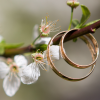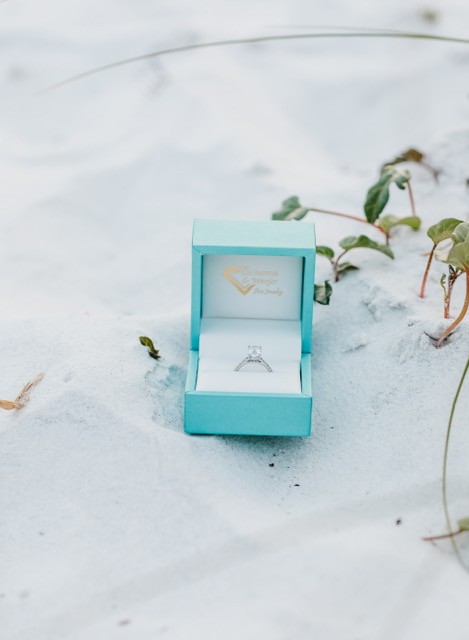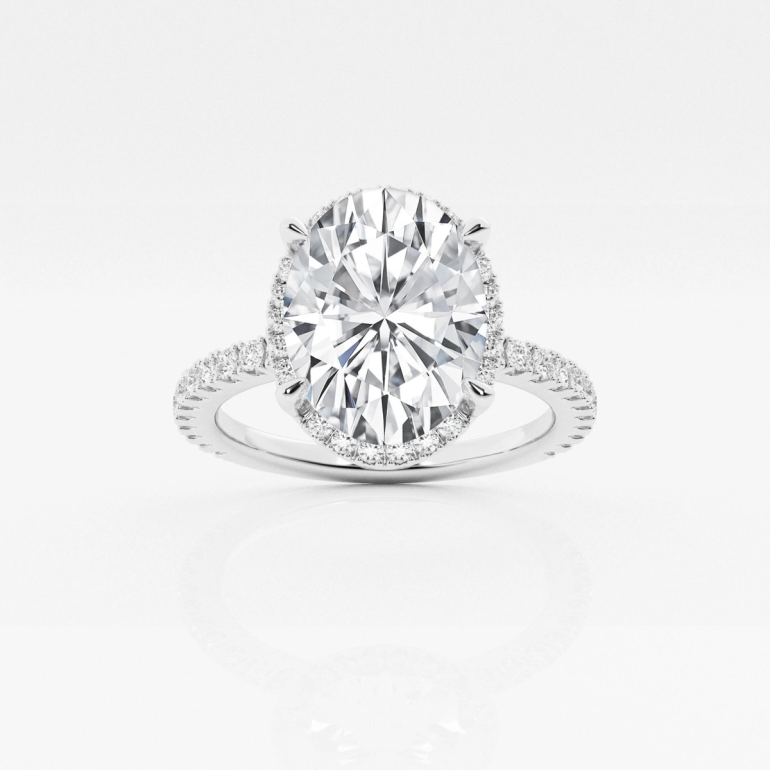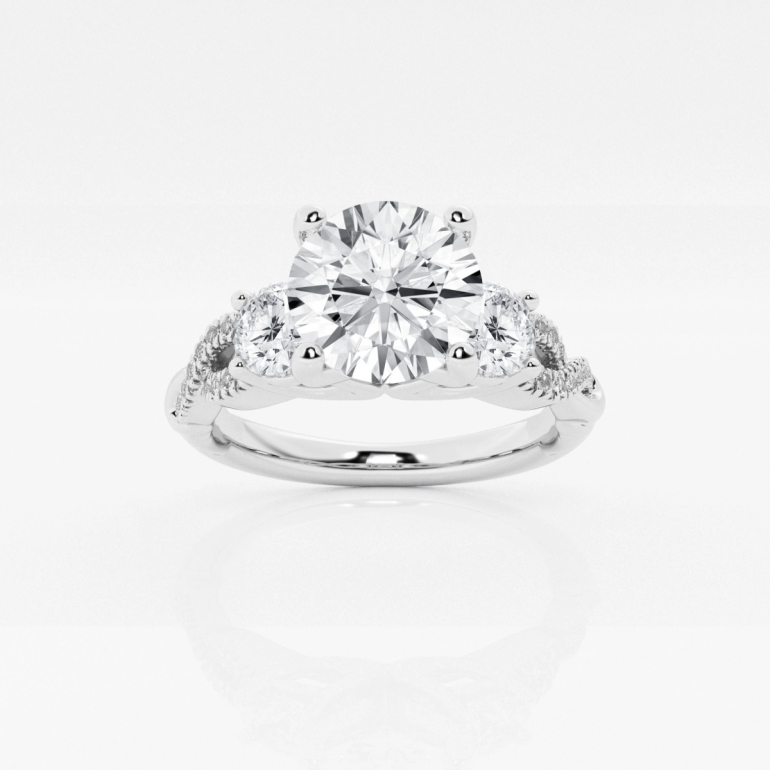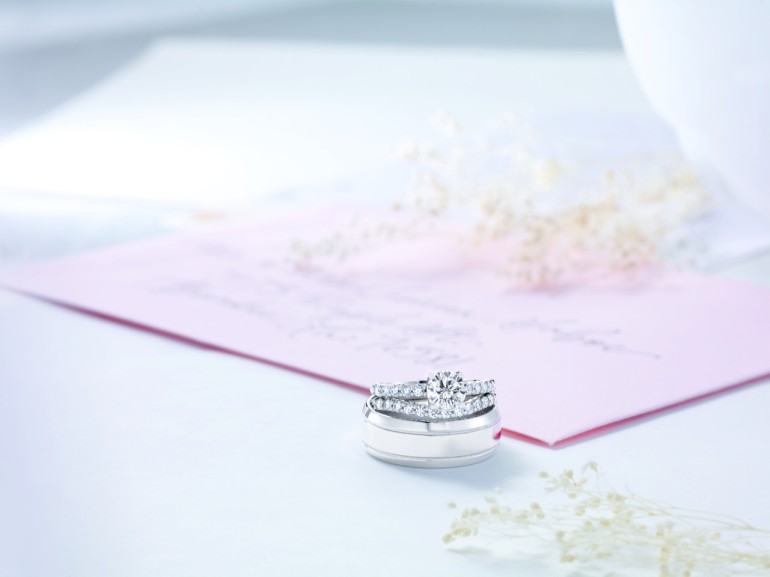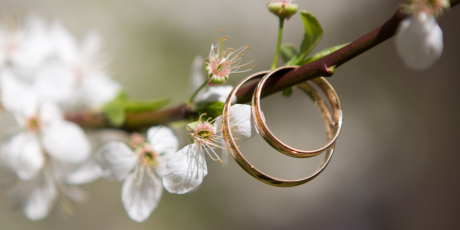Lab-Grown Diamonds: A Fad or the Future?
By Cori Burcham
Every couple entering the stage of engagement-ring shopping wants to find a piece of jewelry that’s as rare and unique as the love they share with their partner.
Mimicking the billion-year growth cycle of a diamond, every love story undergoes a similar journey: forming naturally over time, strengthening through moments of intensity, and resulting in something considered beautiful for its refinement and flaws. While the tradition of engagement rings dates back to ancient Rome, the shift toward diamonds didn’t begin until 1947, when a De Beers ad campaign solidified them as the ultimate symbol of Hollywood glamour and romance.
The campaign’s slogan — “A Diamond is Forever” — may have predicted its longevity as a time-honored standard, but consumer habits have certainly undergone some changes in recent years, resulting in couples selecting stones that reflect their own individuality and values.
Known for their reputation as an ethical and eco-friendly alternative to mined diamonds, lab-grown diamonds are becoming more popular amongst Gen Z and Millennial couples in support of sustainable living.
To assist couples still deciding if lab-grown diamonds are a fad or the future, Delaware Seaside Bride spoke with some diamond-industry experts to learn more.
Despite often being categorized as “synthetic,” lab-grown diamonds consist of the exact same molecular and atomic properties as natural diamonds. According to Michael Wexler, part owner and stone specialist at Desumma & Wexler Fine Jewelry Inc. in Philadelphia, the only difference between natural and lab diamonds is the method in which they’re created: one forming underground for billions of years, and the other created in a lab in months.
Further evidence of a lab diamond’s authenticity, the Gemological Institute of America (GIA) grades both according to the same scale measuring “the four C’s.”
“Even I, being a GIA graduate, can’t tell under a loupe whether it’s a lab-grown diamond or a mined diamond,” said Akshie Shah, the founder and creative director of Grown Brilliance.
According to Grown Brilliance’s website, lab diamonds can be created through two different methods, by exposing diamond seeds to superheated gases: the first is High Pressure High Temperature, which recreates the conditions beneath the Earth’s crust, and the second, Chemical Vapor Deposition, is more akin to how diamonds are formed in interstellar gas clouds.
Over the course of the company’s first two years, Akshie noticed a shift in consumer mentality that may explain lab diamonds’ recent rise in demand. Customer inquiries regarding lab-created diamonds’ authenticity have declined, which signifies that their legitimacy has been accepted by the general public.
For traditionalists like Sergio Palazzo, the COO at Ocean View Jewelers, diamonds manufactured in a lab lack the rarity that makes natural diamonds special. However, Akshie argues that a manmade stone has the potential to be more of an advantage to consumers than a drawback.
Because lab diamonds are created within a controlled environment, the temperatures and conditions can be adjusted to produce higher-quality stones that are brighter and clearer than some mined diamonds available on the market. Unless a couple were to approach a high-end jeweler, Akshie stated, the average quality of natural diamonds available in stores throughout the U.S. ranges from an I2 to an SI1 on the GIA diamond clarity scale. In comparison, Grown Brilliance has the ability to offer diamonds three to four grades higher, such as VS1 or VVS.
Lab diamonds can also be a great selection for couples on a budget since it’s possible to select a larger, higher-grade center stone and still pay less than when choosing a smaller, lower-grade natural diamond.
“They’re getting the ring of their dreams for a fraction of the cost and can spend that money that they save either on their wedding, their honeymoon, or a down payment on their house — things that are so much more meaningful to a young couple,” said Akshie.
Another benefit to lab-grown diamonds is the fact that they’re ethically sourced. In the days before the rough-diamond trade was regulated by the Kimberley Process, so-called “blood diamonds” financed wars against legitimate governments and contributed to human rights violations in Africa. Even today, according to Brilliant Earth’s blog, the Kimberley Process has its limitations, because a diamond’s certification is only attributed to the last country of export, disregarding whether it was first smuggled into that country.
Because manufactured diamonds are produced in a laboratory, couples have more peace of mind knowing their engagement ring is 100 percent conflict-free.
The topic of sustainability of lab diamonds is highly debated and controversial throughout the industry. Because nearly 200 to 250 tons of earth is sifted through to find a single carat’s worth of diamonds, it doesn’t seem too outlandish to claim that lab-grown diamonds are kinder to the earth. Their creation also doesn’t contribute to deforestation, water pollution, or the devastation of biodiverse ecosystems that mining activities have in developing African countries.
As one of the industry professionals who doesn’t agree with their eco-friendly status, Sergio argued that the energy it takes to operate the machinery involved in creating lab diamonds can be just as harmful to the environment.
To offset their consumption of energy, Grown Brilliance intends to transition to a 100 percent sustainable plan by the end of 2023.
“There are companies, including ours, that are working towards minimizing and almost eliminating that disadvantage by going solar-powered and carbon-neutral,” said Akshie.
During the first trip to a jeweler’s showroom, pragmatism requires that couples consider not only the price tag but the overall value of their choice of wedding ring. The ability to produce diamonds in a lab yields a wider selection and lower prices on a previously bank-breaking purchase, but that same availability eliminates the option of getting a return on your investment in the future.
Unlike natural diamond rings, which will retain 60 to 70 percent of their value, lab diamonds don’t currently have a resale market. With that in mind, all three industry professionals still don’t advise couples to pick an engagement ring based on monetary value alone, because the true investment is their future together. Much like the events that led to that union, the decision to select a natural or lab-grown diamond lies somewhere between one’s head and heart, in finding that special ring you can afford and that represents your love for one another.



